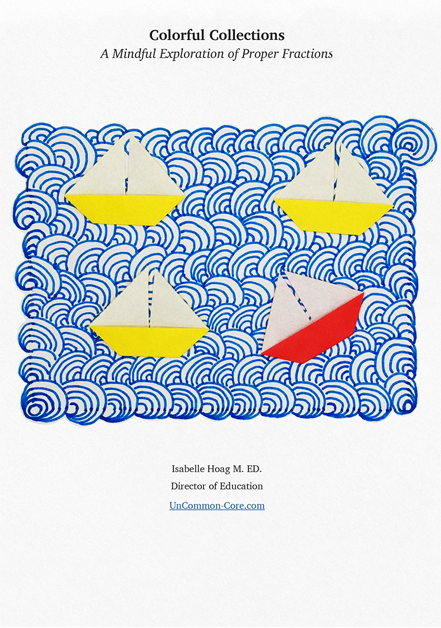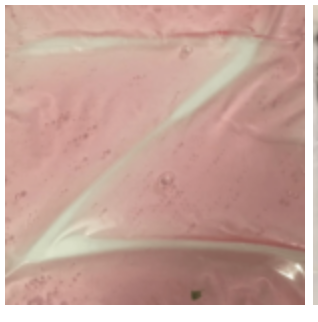
When I started teaching, the fun thing to do was squirt shaving foam on the table and have students write or draw in the foam. Back then, we did it because it was fun. Now we do it because it develops students’ fine motor skills, eye-hand coordination and gives them a hands-on way to practice correct letter formation.
But do we still have squirt shaving foam all over the table? Nope! there is a better way. Baggies. (caption: These photos show the materials I made with shaving foam in one baggie and strawberry shampoo in the other.)
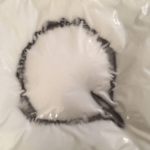
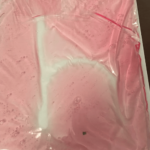
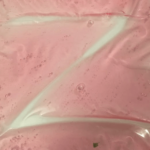
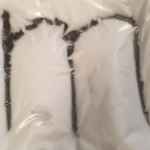
First, students were allowed to play around with the manipulatives – mush up the baggies and experiment with making lines and so on. Then I demonstrated step by step instructions for making letters in the children’s names. I challenged them to write the letters, prompting them step by step.
Sometimes the letters did not last long enough to snap a photo. The shampoo quickly filled in thin lines. Students quickly discovered their own ways to get the results they wanted. One girl found that using three fingers to make each line was the best way to keep the shampoo from filling in her lines. The students loved to “erase” the letters, too.
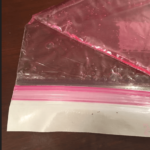 There are many instructions online for making these kinds of materials. Many of the sites I referenced had tape on all four sides. What for? I was much smarter than any website! I saved money by only putting the tape on the top of the baggie to cover the ziplock opening. Also, I purchased generic baggies.
There are many instructions online for making these kinds of materials. Many of the sites I referenced had tape on all four sides. What for? I was much smarter than any website! I saved money by only putting the tape on the top of the baggie to cover the ziplock opening. Also, I purchased generic baggies.
Let it be said, that the people who made those websites probably had a LOT more experience than I had making things for children.
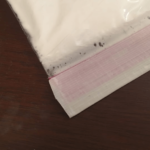 I noticed that the inside of my tote was a bit moist on the morning I brought these materials to school. I thought nothing of it. When I took out the materials to get ready to work with kindergarten students, I noticed that the shaving foam was much less foamy than it had been the day before. There seemed to be less shampoo, too.
I noticed that the inside of my tote was a bit moist on the morning I brought these materials to school. I thought nothing of it. When I took out the materials to get ready to work with kindergarten students, I noticed that the shaving foam was much less foamy than it had been the day before. There seemed to be less shampoo, too.
Then, after working for a while and giving the bag several enthusiastic squishes, a little kindergartener informed me that her bag was leaking. Hmmm. If I were to make these again, I would make them right before class and I would put tape on all four sides. I would pour, squirt or smear less stuff into the baggie and I would plan on using it only one or two days. I would splurge on the thickest baggies I could find.
On the plus side, the students loved these materials. They were excited by the feeling, the scent, the colors, and the fun of trying to make their letters before the goop filled up their lines again. Also, watching students write letters on these materials gave me a chance to show them how to make the strokes from the top down and how to use the hand that is not writing to stabilize the ‘paper’ at the top.
Instructions for squishy writing bags:
Sensory writing bag
Sensory Bags
Use a tray instead of a baggie
Students with developmental delays would have to have adult supervision when using these bags to avoid biting, chewing or other inappropriate use.
Technology tips: Invite students to make the letters of their name. Photograph each letter once it is complete. Print photos, create a display or use the names to label cubbies, hooks, or folders. When you are done using the photos at school, send them home to decorate doors, walls, or windows. Another way to use photographs of these squishy letters is to have each child in the class make a letter of the alphabet and maybe some numbers. Take photos. Print them out in a larger format to decorate your class or hall.
Teaching online: Make use of one of the online whiteboard programs such as Explain Everything. Students can use their fingers or mouse to duplicate letter formation that they have practiced with the squishy sensory bags. Alternatively, search for an app ( like ‘touch and write’ by Fizzbrainapps ) that will duplicate the tracing-in-shaving foam experience.
Students and parents working at home have options that you do not have at school. Parents could spray shaving cream on the shower walls before a bath so that kiddos could practice handwriting while they get clean. Families could find a way to bring letter tracing ideas outside into either sun or snow.
Share This Story, Choose Your Platform!
Download Colorful Collections:
A Mindful Exploration of Proper Fractions
Help your students make sense of fractions.
I started teaching in 1987, which means I’ve collected many tips and tricks along the way. In this ebook, I share concepts, strategies, and classroom materials to help you make math sticky.
Along with this useful ebook, you will receive weekly emails from StickyMath@UnCommon-Core.com. I send information like: teacher tips, educational ideas, book reviews, curated lists, reviews of educational sites, and free first drafts of products that I’m creating for my TPT store. That way, you get helpful ideas and free stuff, while I get some feedback before I finalize products and put them up for sale.
I value your privacy. I will never sell your information. You may unsubscribe at any time.
All the best!
Isabelle
Isabelle Hoag M. Ed.
